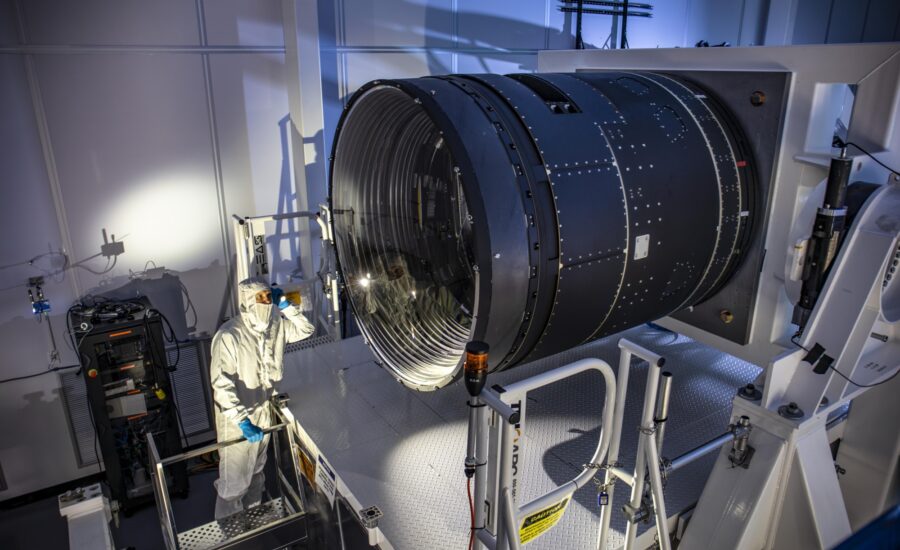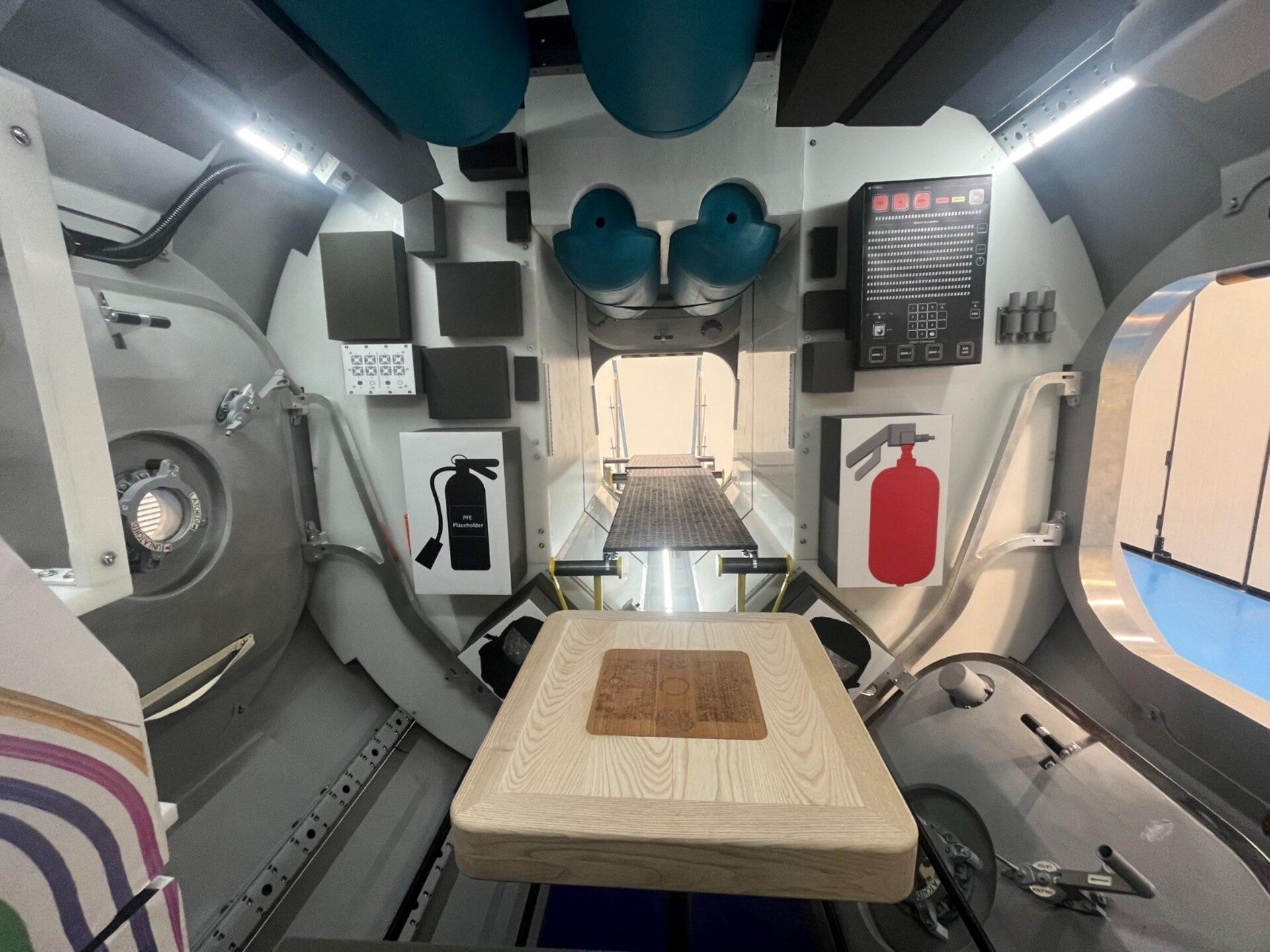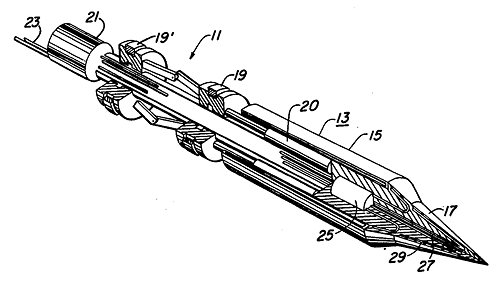

AckSed
-
Posts
357 -
Joined
-
Last visited
Content Type
Profiles
Forums
Developer Articles
KSP2 Release Notes
Bug Reports
Posts posted by AckSed
-
-
Glad to see that the prop-transfer test was a success-
*double-take*
*searches* Ah! I see hot-gas thrusters are still/back on the menu. I'd hoped for this, if only for the coolness factor.
Edit: You know, if this is pulled off first time, we essentially have a functional launch system. Sure, it's far, far too heavy for reusable mode, but expendable would be well within reach.
-
8 minutes ago, Nuke said:
Problem with lunacrete is where do you get the water? Will concrete even cure if its in a vacuum?
I can't speak to the first, but yes, concrete will cure in a vacuum: https://space.nss.org/wp-content/uploads/Lunar-Bases-conference-2-518-Lunar-Concrete-For-Construction.pdf
In fact, the concrete ended up being stronger, and did not lose as much water as thought. The real challenge is that concrete's compressive strength is not as much of an advantage in lower gravity. If making a pressure vessel out of it, the tensile strength is needed more - and that has historically been lower. Reinforcing it with glass fibres spun out of melted regolith may be needed.
Last year, concrete was flown on the outside of the ISS, and made inside: https://www.concrete.org/publications/getarticle.aspx?m=icap&pubID=51738695
Extracting sulphur from troilite (an iron sulphur ore found on the Moon), melting it and mixing in ground-up regolith simulant has been tested, as the same technique's used to make acid-resistant sulphur concrete on Earth. The strength was lower but still fine. However, there are concerns that the sulphur would sublimate away in vacuum, and you do have to pre-heat the mould or you will have voids in the centre. Its advantage is that it's easily recyclable: heat it up and recast it. I've seen one video of railway sleepers made of the stuff being recycled this way.
Amusingly, astronaut pee has been considered, as urea acts like a plasticiser in "geopolymer" concrete (regolith plus sodium silicate and sodium hydroxide), allowing the use of less water: https://www.esa.int/Science_Exploration/Human_and_Robotic_Exploration/Astronaut_urine_for_building_a_Moon_base
Using it as mortar for sintered regolith blocks is also an option.
-
https://arstechnica.com/science/2024/04/metafluid-gives-robotic-gripper-a-soft-touch/
tl;dr adding hollow rubber spheres to a liquid allows you to make a colloid that decreases in volume but doesn't increase in pressure when exerting an external force. Thus, if you overpressurise a 'soft' gripper, the force it exerts does not exceed a certain threshold. This lets you engineer behaviours without using any control algorithms or electronics. It can be tuned by varying the size of the spheres, and stepped by adding different sizes of sphere.
By reducing the size of the spheres to micrometre sizes and using the right materials, they found that they could also tune the rheology (thickness) and opacity with pressure, as the clear spheres collapsing turned themselves into something like lenses.
I love simple things like this that have emergent behaviours.
I don't love the resistance the researchers faced because "this was not an interesting idea".
-
4 minutes ago, JoeSchmuckatelli said:
How do I send a thumbs down to RLab?
Don't they know the purpose of space launch is to entertain me!?!
Do I smell the sour pickle-juice whiff of sarcasm about your comment, sir?
It would be cool to see, 'tis all.
-
32 minutes ago, darthgently said:
He definitely has a corner on the smug market. And I think he probably considers his gap filling guesses as logically implied facts moreso than most
One of the characteristics I appreciate about Musk is that in an interview with millions watching, an interviewer will ask him a question that everyone wants an answer to and he's expected to bravely put forth something confident and comforting and he'll just shrug wistfully and say "I don't know, we'll find out"
He had the same apologetic, "please bear with me as I run into more delays" energy about him when explaining Starship V1's current payload, as he did way back when he was explaining to the investors of Tesla why they didn't have their (original) Roadster yet.
-
It's interesting to see that the Curie kickstage will release the first sat, move up to a 1000km orbit to let the sail go, then come back down, circularise and deorbit itself. Pretty impressive.
Edit: Curie engine really is tiny.
Edit 2: aww, they're not covering the solar sail deployment.
-
https://www.space.com/rocket-lab-nasa-solar-sail-tech-launch-april-2024
This slipped under the radar, but it's highly interesting to me. While this is essentially the last whimper of NASA's solar sail missions - Solar Cruiser's funding was cut - it's still a solar sail!
-
As a postscript to the thread, here is Ivan Bekey in 2000, champion of reusability and SSTO inside NASA, wondering why Shuttle-derived launch vehicles are being considered as "affordable" competitors to the 2nd gen. RLV: https://spaceref.com/press-release/testimony-of-ivan-bekey-before-the-house-science-committees-subcommittee-on-space-and-aeronautics/
QuoteOne of the main findings was that even though billions of dollars were spent on improving the Shuttle, the flight costs would not become significantly lower.
[...]
I am not aware of any study that has come to significantly different conclusions, and thus I fail to see why a Shuttle Derived Vehicle would be baselined as one of the competitors to the 2nd generation RLV. It is, of course, appropriate to continue Shuttle upgrades that increase its safety, as NASA cannot afford another catastrophe. That does not mean, however, that we should designate a new Shuttle Derived vehicle to become one of only two competitors for the 2nd generation RLV, as it sends the message that NASA really intends to fly the Shuttle forever in one form or another.The other competitor was the Venturestar. We know how that turned out. :-(
-
50 minutes ago, StrandedonEarth said:
Okay, so a booster airframe has made 20 flights. Does it still have any of its original Merlins? What is the most flights for a Merlin engine?
Says here it was carrying a fleet-leader 1D that had done 22 flights: https://www.americaspace.com/2024/02/23/spacex-launches-record-setting-merlin-engine-returns-record-tying-booster-to-safe-landing/
-
Well of course. Which is why this is designed to track subtle gravitational shifts from the norm in astronomical observations.
-
That dark energy's a bit elusive and hard to track. I'd better use the BIG lens: https://www6.slac.stanford.edu/news/2024-04-03-slac-completes-construction-largest-digital-camera-ever-built-astronomy
Spoiler
-
-
That's genuinely impressive. I wonder why it wasn't used before - fragility?
-
Isn't the E-2 one of the few non-Russian engines using oxygen cooling? And don't they have a Russian propulsion engineer? That might explain it running oxygen-rich.
-
On 4/15/2024 at 2:35 PM, tater said:
The guys at LANL were playing with a tunneling device. Unlike the offering from the Boring Company, the LANL one was nuclear powered... it was designed to MELT regolith as it drove forward. The resultant glass then seeps into the surrounding regolith forming a glass tube.
https://patents.google.com/patent/US3693731A/en
https://www.osti.gov/servlets/purl/4687637
Their civil engineering guys did a paper on this for the Moon and Mars I saw presented in the 90s.
And this is a card in High Frontier 4 All. It's the "Nuclear Drill" Robonaut. Pretty good card.
-
When was the first folding umbrella? In the museum of Anatolian History in Ankhara, there are the wooden remains of a folding umbrella/parasol found in Phrygian grave goods dating to the 7th century BC. Can anyone do one earlier?
-
Astrolab is already testing mockups in the Australian desert. Seems it's a rover first, people-carrier second:
-
Found the missive; it's on how in NASA's 1993 Access to Space initiative, one working group concentrated on a hydrolox SSTO with wet wings.
All hardware and structure and avionics and all that being equivalent, a kerelox vertical-takeoff, horizontal landing SSTO would have been a whopping 35% lighter, even with bulky, heavy NK-33 and RD-58 Russian engines: https://yarchive.net/space/rocket/fuels/hydrogen_deltav.html
(Mitchell Burnside Clapp was one of the founders of Pioneer Rocketplane with Robert Zubrin... which also ran out of funding. 70s through to early 2000s, "US private space pioneer" was a byword for 'losing your shirt'. :-/ )
The why is interesting. For one, the structures (tank and pressurisation systems) are much simpler, more mature and need less pressure overall. For another, because you have dense propellants and lower ISP: you burn them faster and have more thrust; you grow lighter near the end of your ascent; you end up accelerating faster; and you need slightly less delta-V to reach their reference 51-degree ISS orbit. It's not much - 8,870 m/s versus 9,135 m/s - but if making a SSTO rocketplane, you take what you can get.
Their improved kerelox plane was essentially the same proportions as the Boeing RASV: https://www.secretprojects.co.uk/threads/usaf-nasa-rlv-programs-from-the-past-amsci-science-dawn-have-region-etc.315/
We know a bit more about winglets these days, so lacking a central rudder might not be a deal-breaker.
Can sled launch make HT work? I don't know. Consensus is that it grants about 100-500 m/s to the initial takeoff, but the shallower ascent wipes out that advantage.
-
Intuitive Machines' Moon Racer: near-future Aristarchus 500 rally entrant
Lockheed-Martin's Lunar Dawn: TRUCK. *grunts in American*
Astrolab/Axiom: About to drop some Lunar beats
-
Haven't heard of these people. It does seem similar to proposals I've read in the old sci.space.* USENET archives. And Gary Hudson made me prick my ears up. Ridiculous as it might seem, the Roton could have worked, its payload just couldn't grow beyond what the customer wanted, and, already on a shoestring, they ran out of money. The story of the rise and fall is told in USENET posts by the man himself: https://yarchive.net/space/launchers/roton.html
QuoteFrom: [email protected] (GCHudson) Newsgroups: sci.space.policy Subject: Re: Rotary Rocket: what happened? Date: 30 Jun 2000 15:21:13 GMT
*snip*
The essence of building a commercial space transportation company is finance, not engineering. The basic mission remained largely unchanged, even if there were technical alterations. Fail to acommodate to your customer's/investor's wishes and you absolutely won't succeed, either in finding funding (which we did pretty well, but even so not well enough) or finding launches. You'll end up with a technically pure venture which will go nowhere. Or like NASA, doing mostly technology sandbox stuff.
I'm assuming he was contracted to design the engine, not to advise on the business. Back to the spaceplane.
Thing is, the key metric of any SSTO is propellant mass fraction, or 'how much is fuel, versus how much is structure?' You want structure to be a low fraction and fuel to be particularly high. If you have a spaceplane and use 'wet wings' for the kerosene, the thinking goes, then the 'dead' weight of the wings becomes part of the fuel tanks and the mass penalty of having them is offset enough to have a workable mass-fraction. You also want a combination of dense propellants and relatively high ISP. Kerelox is perfectly servicable in this regard.
Small launchers are particularly sensitive to mass; I recall Peter Beck saying Electron's mission to launch CAPSTONE was so near the limits of what it could do that the mass of which NASA logo sticker to use was significant. The larger you get the more mass your structure gains, but tank mass grows at a lower rate than tank volume... which increases your propellant mass fraction. This is the hope and dream behind every oversized reusable SSTO dreamed up since before the space program began.
Do I think they have an engineering case? There's a flicker of hope there, but they need to be eagle-eyed to any mass increase. a business case? Much less confident yet.
-
21 hours ago, sevenperforce said:
I wonder if the gimbal is happening halfway down the nozzle rather than up at the top. The structure of the top of the engine looks pretty gimbal-unfriendly, and these highlighted bits around the nozzle extension look suspiciously like gimbal mounts
Could they be the same mountings I saw for the second-stage engine in Everyday Astronaut's walkaround? Those looked mobile, but weren't.
-
Fascinating interview showcasing the motivations, past and present, behind ISRO: https://www.planetary.org/articles/history-motivations-indias-space-program
-
Speaking of science, here it is: The Recurrence Inversion of the rotating objects at the Space Stations is the Gyroscopic Effect
QuoteThe analytical approaches of the new gyroscope theory enabled the description of the physics of the phenomenon of the rotating object in the weightless conditions of space flights. On the rotating object, at the free flight, are acting the inertial forces generated by its circular motions around the earth and its rotating mass.
-
4 hours ago, Exoscientist said:
Do you have a link where Beck said this?
Here's my condensed transcript: https://forum.kerbalspaceprogram.com/topic/156515-rocketlab-discussion-thread/?do=findComment&comment=4339716
QuoteArchimedes development going well, but it remains the long pole in the tent.
Chose oxidiser-rich staged combustion because if you dial it back a bit from squeezing out every last bit of performance, you end up in really benign operation at the same level of performance as a gas-generator cycle, but "kind of bulletproof". Compared it to an airplane engine.
Ox-rich combustor couldn't be dialled back too much or it would extinguish; had to solve that in the process of building the most boring, unboring engine.However, Archimedes is oxygen-rich staged combustion, which I encourage you to look over Everyday Astronaut's article on engine cycles to explain. Scroll down to "Full Flow Challenges". Very short summary: comparing the enthalpy of a hypothetical rocket engine with the same mass flow rate but different staged combustion cycles, oxygen-rich staged combustion has a moderate rise in temperature in its preburners, while full flow staged combustion has the lowest rise in temperature for the preburners while extracting the most amount of work, not only stressing the preburners less.
So my conclusion may have been fallacious. Sorry.
Funny story. Something I missed in the transcript is that Rocket Lab is also considering full-scale testing for Neutron's first flight, citing experience with recovering Electron. At 1hr 09 min:
QuoteHost: Are there any plans for like sort of hop tests with Neutron or is your first launch with Neutron just going to be sort of an all up, "We're sending it"?
Beck: Yeah no we'll just- we'll just bring it home. We'll try to- I mean look, if if we hadn't had the experience with electron, then you'd go, "Yeah no." It's- there's there's a lot of- a lot we need to learn there, but this is kind of- you know I think I've said it before it's if we hadn't gone through the process of of trying to reuse Electron, like trying to make a reusable launch vehicle with Neutron would just be an incredibly daunting task and you'd have so many unknowns um in Known Unknown and unknown knowns that it would be- you know it would be be really difficult and you'd have to kind of you know chunk the problem up and to start breaking it off into into various kind of different things.
You know it's it's not it's not the first time we've we've we've ridden the wave back through the Earth's atmosphere so you know- the learnings you know if if nothing like if nothing other than um that those learnings comes from electron's reusable program it will be 1,000% totally worth it: from materials, from control algorithms, to understanding how vehicles actually interact with the atmosphere, to Thermal Protection Systems um we've learned it all so- um well I'm sure there's more to learn but, you know we've learned enough that we'll just- we'll just have a crack at bringing it straight in.
Even cautious businessmen like Peter Beck are taking the 'just have a crack at bringing it straight in' approach, thanks to their experience with reentry on their previous, smaller booster.
Rocket Lab has 6 recoveries under their belt.
SpaceX has 290 successful landings and counting.
Your honour, members of the kangaroo science court, learned Kerbalists: this is strong evidence for full-scale prototyping and blown-up boosters being an attractive and, dare I say it, workable development process.



Artemis Discussion Thread
in Science & Spaceflight
Posted
I'm going to say something contentious.
Now that manned flights are growing closer, we have to address a fact that isn't being spoken: space travel is dangerous. The Artemis program, or something connected to it, may have the first death in space in over a decade. Maybe not in the first launch, not in the second, hopefully never. But for all the talk about commercialisation, this is space exploration and it is not safe.
This isn't pronouncing doom. As Chris Hadfield says in his TED talk on fear versus danger, NASA has considered risk, reduced it where possible. He also said that the Space Shuttle was a complex flying machine and the chances of a catastrophic event was, when he flew, 1 in 38. He still went.
SLS and Orion is less complex, we have far better robotics than Apollo ever did, and an honest-to-Oberth partially-reusable 'space truck' in Falcon 9.
However... we cannot fully design out the chance of death, nor pretend that we are not putting people in harm's way. SpaceX makes it look easy. SpaceX also has "Stay Paranoid" emblazoned on the desks of Mission Control. Even the Apollo 9-like mission proposed in tandem with SpaceX could result in deaths.
What brought this on? A blog post by Wayne Hale on the laser-focus on monetary cost as the be-all, end-all of space exploration: https://waynehale.wordpress.com/2019/06/19/blood-and-money/
If in the future something does go wrong, I have a polite request for the few people reading this: don't go mad. Do not argue yourself into the hole that all exploration should be done robotically. That you knew this would happen and humans should never have left the ground, never mind Earth.
Do not let your fear control you. If you see someone else who likes space falling into the same trap, I request - because I can't make you do a damn thing - that you pull them out.
Wayne Hale thinks the risk is worth the reward, that it is brave to take on this risk, and so do I.